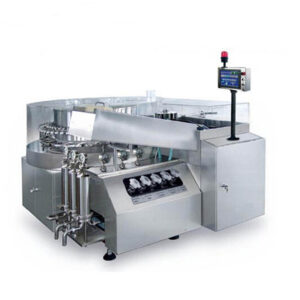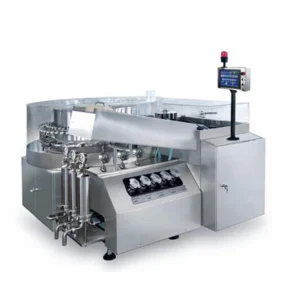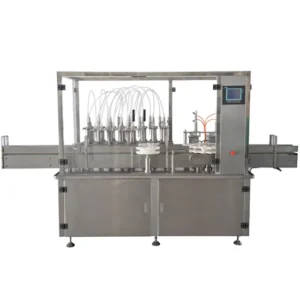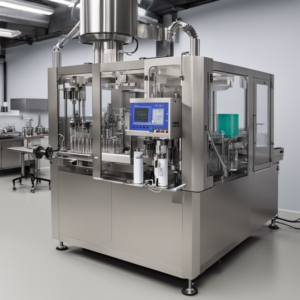Oral Liquid Production Line
Introducing Qualipak’s cutting-edge Oral Liquid Production Line! Designed for efficiency and precision, our state-of-the-art equipment ensures consistent quality and high output for your oral liquid products. Streamline your production process and elevate your brand’s reliability with Qualipak’s innovative solutions. Reach new heights in liquid formulation with us!
Introduction of Oral Liquid Production Line
Oral liquid production lines play an important role in the pharmaceutical industry, ensuring the efficient manufacture of liquid oral medications. These contain different types of machinery and processes used to make safe high-quality oral liquids such as syrups, suspensions and solutions. This article discusses various types of oral liquid production lines; their working processes, applications, functions, benefits, future trends and developments, maintenance as well as training needs.
Kinds of Oral Liquid Production Lines
Batch Production Lines: In batch mode, liquid orals are prepared in lots or discrete batches. This method helps to ensure a greater control is achieved in production and easier customization of formulations is facilitated.
Continuous Production Lines: Continuous production systems operate nonstop thereby producing oral liquids continuously. In contrast to batch manufacturing lines, however, this method may be less flexible but has higher efficiency and throughput.
How it is Work
Typically there are several main operations involved in the manufacture of oral liquid products:
Formulation: In this initial step, oral liquid medicine is formulated according to the desired specifications which include active pharmaceutical ingredients (APIs), excipient flavours and preservatives.
Mixing and Homogenization: The components should be well mixed so that uniform distribution within the oral liquid is maintained throughout its volume. For smooth suspension or solution, it might require homogenizing as a way to break down particles.
Filling and Packaging: Bottles, vials or sachets serve as containers for the final product which is packaged after being filled with the formulated oral liquids. Therefore filling process must be accurate enough for proper dosing. Ultimately before distribution, these containers will be closed sealed then labelled appropriately.
Sterilization (if necessary): Final products must meet sterility requirements therefore some form of sterilization like autoclaving or filtration may need to be adopted especially when dealing with parenteral administration type of oral liquids.
Applications
The application areas for these types of liquid medications produced by these machines include:
Oral suspensions
Syrups
Solutions
Elixirs
Emulsions
These medicines are given orally to children, old people and those with difficulty in swallowing tablets or capsules.
Functions and Benefits
Precision and Accuracy: Oral liquid production lines have mechanisms for precise dosage control that ensure the right amount of medicine goes into the patient’s body without any errors.
Efficiency: Modern production lines are designed for high efficiency and throughput thus enabling pharmaceutical companies to meet demand while minimizing production time and costs.
Flexibility: Batch production lines offer flexibility in formulation as well as batch sizes thereby allowing easy customization according to particular requirements or market demands.
Quality Assurance: The highest quality, purity and safety levels are maintained in oral liquid production lines through strict controls.
Reduced Risk of Contamination: Closed systems plus sterile processing techniques assist reduce contamination chances thereby upholding product integrity.
Patient Compliance: Liquid oral medications provide ease of administration making them convenient, especially for patients who can’t swallow solid drug forms.
Future Trends of Oral Liquid Production Line
The future of oral liquid production lines lies in automation, process optimization, and digitalization. Below are some key trends.
Industry 4.0 Integration: This includes real-time monitoring through the Internet of Things (IoT), and artificial intelligence (AI) which is used in predictive maintenance to optimize processes using machine learning among others on Industry 4.0 technologies.
Single-Use Systems: Increasing the use of single-use systems/disposable components enhances sterility, flexibility plus cost-effectiveness.
Personalized Medicine: Oral liquid drug formulations are customized as per the unique requirements of individual patients due to the advent of pharmacogenomics and precision medicine.
Continuous Manufacturing: Continuous manufacturing is increasingly becoming dominant in oral liquid production hence driving to high-speed, low-cost, and environment-friendly processes.
Regulatory Compliance: There should be an emphasis on meeting regulatory demands that are updated continuously such as data integrity, traceability and documentation.
Maintenance
To ensure optimum performance, reliability standards and compliance with statutory requirements in the pharmaceutical industry it becomes necessary to maintain the oral liquid production lines. Maintenance duties may include:
Routine Inspections: Regular observation to see if there is any sign of damage or wear on a machine component.
Cleaning and Sanitization: Thorough cleaning of equipment surfaces and its sanitation aim at preventing any microbial contamination as well as cross-contamination.
Calibration and Validation: For them to continue providing trusted results, instruments must be calibrated while processes and equipment must be validated for they must follow specific codes given by some authorities’ bodies like ISO 9001-2008 etc..,
Preventive Maintenance: Pre-scheduled maintenance activities such as lubrication, alignment checks or replacement of worn-out parts help avoid unexpected breakdowns that may lead to long downtime periods.
Training: All personnel operating the oral liquid production lines should be well-skilled so that they can implement standard operating procedures safely as required by law.
Questions and Answers
- What is an oral liquid production line?
Oral liquid production lines are setups in the pharmaceutical industry used for producing liquid drugs given by mouth such as syrups, suspensions, solutions etc. They involve several pieces of equipment and processes for formulating, mixing, filling and packaging these medications.
- What types of oral liquid production lines are available?
There are two main types of oral liquid production lines – batch and continuous. With batch processing, oral liquids are prepared in separate groupings which allow flexibility in terms of formulation as well as batch size. A continuous running approach means non-stop operation with faster speed but it may limit the possibilities to change anything about the current system design (especially when considering technological aspects).
- What are the key processes involved in oral liquid production lines?
The main activities include formulation, mixing and homogenization, filling & packing as well as if required then sterilizing them too. The formulation stage is about combining active pharmaceutical ingredients (APIs), flavouring agents plus preservatives into specific configurations; meanwhile, mixtures must be homogenized adequately so that they attain the right consistencies before being packed up within bottles/ampoules etc., labelled accordingly followed by sealing them appropriately
- What are the applications of oral liquid production lines?
Manufactured using such technologies are different forms like elixir emulsions amongst others we can mention syrups solutions suspensions etc.; most of these types are administered to children elderly people individuals who have swallowing disorders since they cannot take conventional dosage forms consisting only of solids.
- What are the benefits of using oral liquid production lines?
The advantages, however, include precision and accuracy in dosage, efficiency in manufacturing, flexibility in formulation and batch sizes, stringent quality assurance measures, risk of contamination and improved patient compliance due to the ease of administration.
- What are the trends that will emerge in oral liquid production lines?
Such future direction would entail interconnection with Industry 4.0 technology for automation and process optimization; adoption of single-use systems leading to better sterile conditions and enabling greater flexibility; customization of formulations as per personalized medicine; increased use of continuous manufacturing techniques; and continued adherence to regulations by all stakeholders.
- What is the maintenance procedure for oral liquid production lines?
Proper maintenance involves conducting regular inspections, cleaning and sanitization procedures, calibration/validation exercises and also preventive maintenance activities as well as training programs aimed at ensuring that personnel are well-versed with all policies governing their profession. They enable such equipment to run according to their specifications so that they deliver optimal performance while maintaining reliability; concerning regulatory requirements.
- What kind of training is necessary to operate oral liquid production lines?
Training programs should encompass working on equipment both mechanically/electrically interfaced within the factory using various software applications guiding information flow between different workstations for enhanced processes. For example, anyone who operates or maintains an oral liquid production line must have adequate training which can guarantee competency besides safety as well we strict compliance against SOPs (standard operating procedures).
- What are some common problems encountered during oral liquid production?
These include uniformity/consistency in formulation; maintaining accurate dosing levels; mitigating risks associated with contamination concerns; meeting set regulatory standards as well and ensuring cost effectiveness through more efficient throughput designs among others.
- How can pharmaceutical companies optimize oral liquid production processes?
This may involve several initiatives such as investing in cutting-edge machinery/technology; instituting dependable quality control measures across the system; creating an environment where everyone is focused on continuous improvement; and knowing what other companies do within this space vis-à-vis what the government requires.




